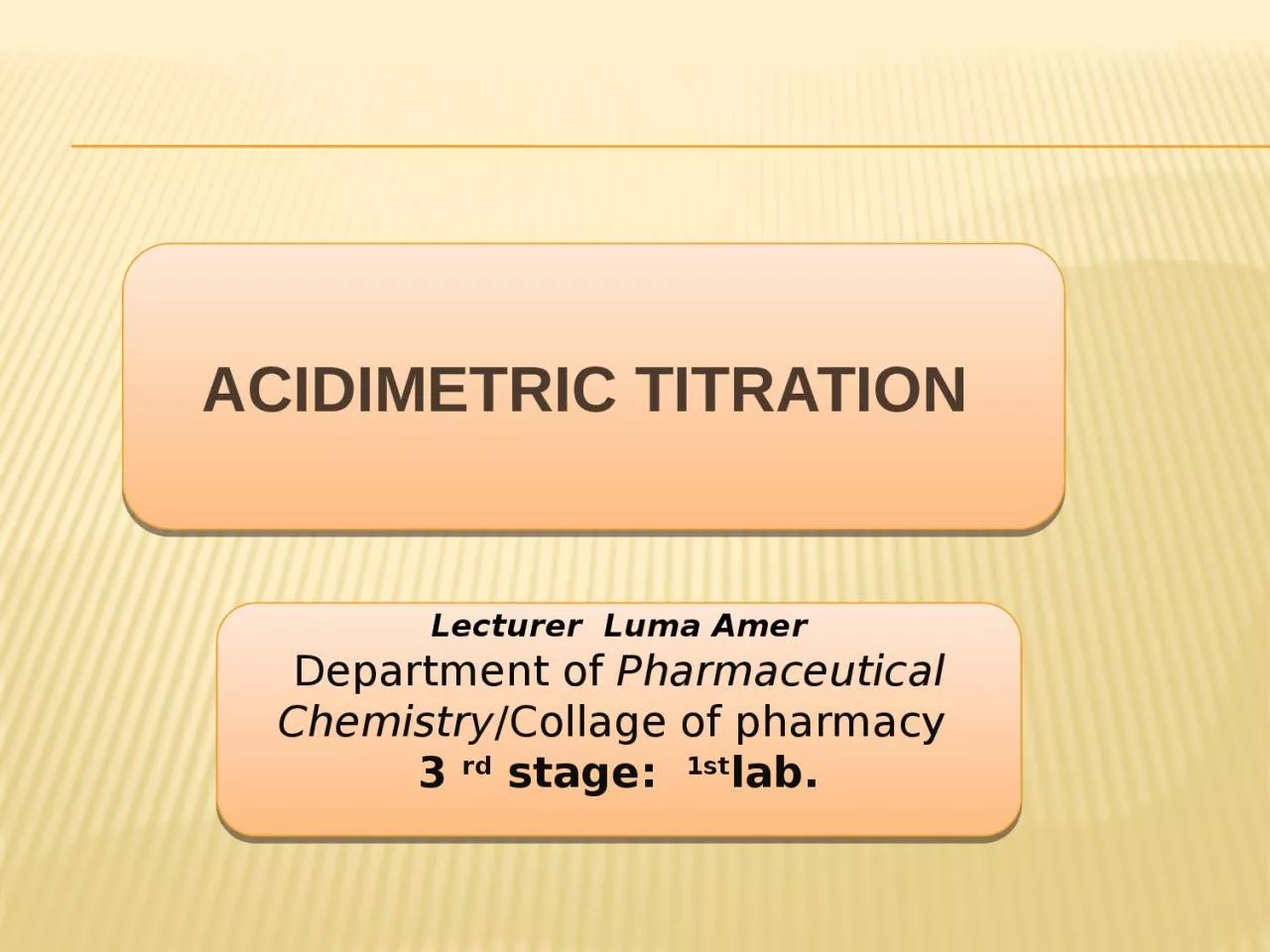

Pharmaceutical Chemistry Collage of pharmacy 3 rd stage 1st lab Acidimetric Titration Acidimetric Titration Theory of acidimetry Acidimetry essentially involves the direct or residual titrimetric analysis of alkaline substances bases employing an aliquot of ID: 935316
Download Presentation The PPT/PDF document "Lecturer Luma Amer Department of" is the property of its rightful owner. Permission is granted to download and print the materials on this web site for personal, non-commercial use only, and to display it on your personal computer provided you do not modify the materials and that you retain all copyright notices contained in the materials. By downloading content from our website, you accept the terms of this agreement.
Slide1
Lecturer
Luma AmerDepartment of Pharmaceutical Chemistry/Collage of pharmacy 3 rd stage: 1stlab.
Acidimetric Titration
Slide2Acidimetric Titration
Theory of acidimetry: Acidimetry, essentially involves the direct or residual titrimetric analysis of alkaline substances (bases) employing an aliquot of acid and is provided usually in the analytical control of a large number of substances. Examples: (a) Organic substances: urea, sodium salicylate, diphenhydramine. (b) Inorganic substances : sodium bicarbonate, milk of magnesia, ammonium chloride, calcium hydroxide, lithium carbonate, zinc oxide etc. Direct titration method Residual titration method
Slide3Assay of Sodium Carbonate
Introduction:Sodium carbonate, Na₂CO₃, is a sodium salt of carbonic acid.Formula: Na2CO3 , Molar mass: 105.9885 g/mola crystalline heptahydrate, which readily effloresces to form a white powder.Soluble in water and very slightly soluble in alcohol,odorless powder that absorbs moisture from the air, has an alkaline taste, and forms a strongly alkaline water solution.Uses:for dermatitis’s, mouthwash, vaginal douche; veterinary use as emergency
emetic.
In solution to cleanse skin, in
eczema,to
soften scabs of ringworm.
Slide4Principle:
Assay of Na2CO3 with what? Type of titration ?Direct acid base titration method .Against 1.5N sulphuric acid and by using methyl orange solution as indicator. . The equation of reaction is: Na2CO3 + H2SO4 Na2SO4 + H2O + CO2Yellow (orange) pink ph= 4.6 ph= 3.2
Before titration at the end point
Slide5Procedure:
1- Weigh accurately about 1.00 g, of sodium carbonate in a suitable beaker.2- Dissolve it in 20 ml of water (DW).Notice: you will get turbid (cloudy) solution, Wait until it becomes clear.3- Transfer 10 ml from previous solution to a conical flask.4-Add two drop of methyl orange solution as indicator.5- Fill the burette with 1.00 N sulphuric acids.6- Titrate with 1.00 N sulphuric acids.7- Repeat the titration method and take the mean for the end point Values.
Slide6Calculation:
% Na2CO3 = V x N x meq. wt. x 100 / wt of sampleEach ml of 1 N sulphuric acid is equivalent to 0.053g of Na2CO3Each ml of 1.5 N sulphuric acid is equivalent to 0.0795 gm of Na2CO3.
Cognate Assays: Sodium bicarbonate; sodium salicylate tablets.
Slide7Slide8